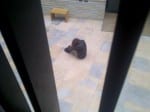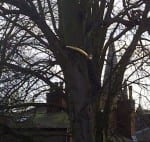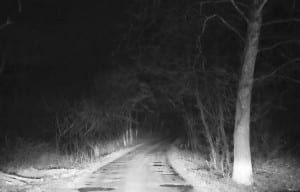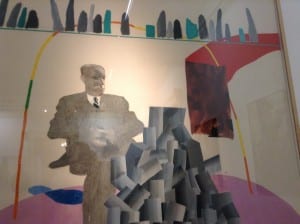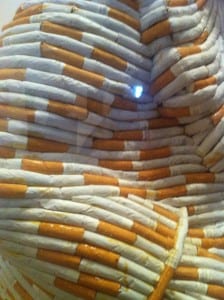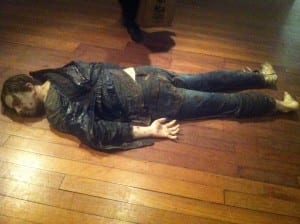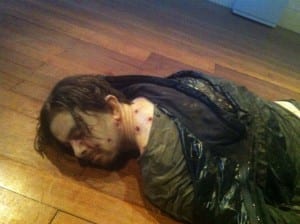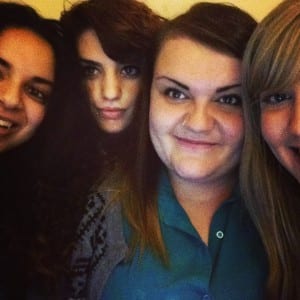After months of preparation and hard work, the performance was finally put into practise and we felt it was very successful. Enduring a 6 hour performance was an extreme test for us but we found ourselves captivated by the continuous sound of ticking clocks which made the rhythm in our movements easier to achieve.
The start of the day proved to be a little stressful as we set up the projections and puzzle pieces ready to start at 10 o clock but found that everything came together well as we started. We only had one mishap throughout the entire performance which occurred in the first hour when an alarm clock failed to go off to notify us it was ‘time to get up’. Luckily, this was resolved quite easily and went unnoticed by the audience we had at the time.
During the first hour, we ‘slept’ against one of the walls in Gallery 3, which I found the hardest task of the performance as we had to keep very focused and could not relax like you do in reality when you sleep. After we had woken up from the sleep, we began the start of our condensed 24 hour day which included the motions of brushing our teeth, washing our faces, eating breakfast and walking to work, all for 15 minute sessions. Due to the practise for these movements that we had done prior to the performance, the movements were easier to control and physically were not as gruelling as we had expected them to be.
In the third hour, the focus was to be at ‘work’ which we had decided would be a clock factory as it reflected the ideas of James Usher’s clock collection and his views on industrialism. We decided that we would create a floor tile puzzle in which we drew a clock onto it and then during the ‘work hours’, we would work together to put the puzzle pieces back together, as if we were putting the components of a clock together in a factory. I found that this particular part of performance was successful as it seemed to intrigue a lot of visitors of the museum to follow our progression. This lasted for 1 hour and 45 minutes and then we moved on to the last two hours of our performance.
The final hours consisted of using movement to portray watching television, relaxing and eating dinner before then returning to our starting position of sleeping against the wall in the gallery.
Overall, I thought that our performance was successful and that the projections we used, which included a fully working digital clock that we had made using our bodies as the numbers, and a decomposing pineapple that we had filmed over a series of weeks, they were both an important and intriguing aspect.
I feel that we could have improved the movements we used and maybe incorporated more movements to the piece to make it more of a statement in the space. If we were to develop this further, we could consider extending the time in which we performed and perhaps consider performing for the complete 24 hours. However, due to the space we were in, it was not possible to do this as it is a public museum which has opening an closing times that we had to abide by.

